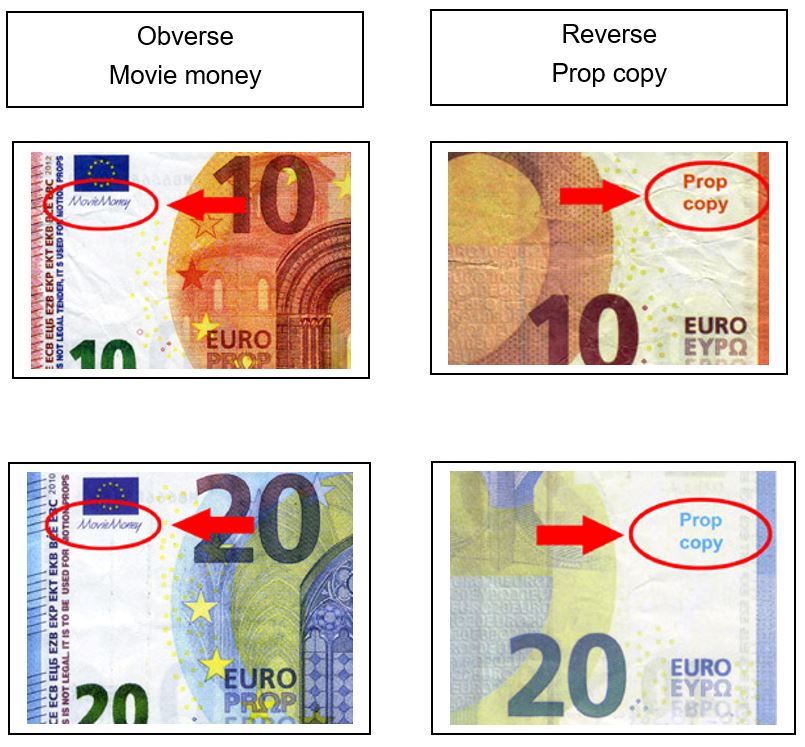Fewer counterfeits in circulation
In the first half of 2021, the Bundesbank recorded approximately 21,400 counterfeit euro banknotes with a nominal value of €1 million. The number of counterfeits fell by 13% compared with the second half of 2020, and the nominal value of the banknotes seized decreased by 16%. Statistically, this equates to five counterfeit banknotes per 10,000 inhabitants. Relative to the banknotes issued by the Bundesbank over the last six months (5.5 billion banknotes), there were only four counterfeits per 1 million genuine banknotes.
“There has been a clear decline in the number of counterfeits due to the coronavirus restrictions. Opportunities for consumption were highly restricted precisely in those areas where cash plays a significant role,”
said Johannes Beermann, the Bundesbank’s Executive Board member responsible for cash management.
As had been the case in the previous year, most of the counterfeits were easily identifiable specimens, even having the words "movie money" printed on the obverse side or "prop copy" on the reverse. “That said, the counterfeiters have also learned a thing or two: on some of the counterfeits, they even covered over the label “movie money” or “prop copy” and added the signature of the former President of the ECB, Mario Draghi,”
Mr Beermann noted.
The table below shows the distribution of counterfeits across the various denominations in the first half of 2021.
Banknotes |
Number |
Share (rounded) |
€5 |
316 |
1% |
€10 |
2,211 |
10% |
€20 |
8,649 |
41% |
€50 |
8,247 |
39% |
€100 |
1,292 |
6% |
€200 |
155 |
1% |
€500 |
486 |
2% |
Total |
21,356 |
The first banknote series accounted for around 16%.
Recognising counterfeit banknotes
As counterfeit banknotes are not replaced, any banknotes received should be checked using the “feel, look, tilt” method. It is advisable to compare a suspect banknote with one definitely known to be genuine and to always check more than one security feature.
Movie money and prop copies can easily be identified by the labelling on them.
All counterfeits can be identified by the following characteristics:
- Feel:
- Banknote paper feels crisp and firm. [1] It is often possible to identify simple counterfeits just by feeling the banknote. However, to be on the safe side, the Bundesbank recommends checking other features as well.
- Raised print on the front of the banknotes can be identified by touch, for example. Banknotes belonging to the Europa series show the letters “BCE ECB EЦБ EZB EKP EKT EKB BĊE EBC” (and “ESB” on denominations of €50 and above) across their left edge as well as a series of short lines on the left and right-hand edges.
- Look:
- When any banknote is held against the light, the watermark appears as a shadowy image in the unprinted area.
- On denominations of €20 and above belonging to the Europa series, the upper section of the hologram contains a transparent window showing a portrait of Europa, a figure from Greek mythology.
- Tilt:
- The hologram images change when the banknote is tilted. Rainbow-coloured effects appear around the motifs.
- An emerald number can also be seen on the bottom left-hand side on the front of the banknotes belonging to the Europa series. When the banknote is tilted, the emerald number changes colour and the effect of a light stripe moving up and down becomes visible.
- The €100 and €200 banknotes have been equipped with new and improved security features. The emerald number contains several euro symbols that change in size and colour. The hologram contains a satellite feature showing two euro symbols that move around the denomination number.
Far fewer counterfeit coins in circulation
In the first half of 2021, just under 14,600 counterfeit coins were detected in German payments, compared with around 22,500 counterfeit coins in the second half of 2020. Statistically, this equates to around four counterfeit coins per 10,000 inhabitants in Germany per year.
Counterfeits were identified only in the three highest denominations, and their incidence in the first six months of 2021 was as follows.
Coins |
Number |
Share (rounded) |
50 Cent |
169 |
1% |
€ 1 |
1,056 |
7% |
€ 2 |
13,338 |
92% |
Total |
14,563 |
Checking coins for authenticity
The following pointers can make it easier to identify genuine coins.
- On genuine euro coins, the motif stands out clearly from the background of the coin. By contrast, the image on counterfeit coins often appears blurred, and the surface of the coins may be uneven.
- Counterfeits generally differ slightly in colour from genuine coins.
- The edge inscriptions of genuine €2 coins are sharp. Those on counterfeit coins are frequently incomplete or irregular.
- Genuine €1 and €2 coins are only slightly magnetic. They are attracted to magnets but can be removed again with very little effort. Counterfeit coins, on the other hand, are usually either non-magnetic or are strongly attracted to magnets.
Counterfeit prevention
Through its branch network, the Bundesbank provides training courses free of charge to the banking industry, retailers and any other interested parties. However, these cannot take place at present owing to the coronavirus pandemic. Instead, the following learning programs can be accessed via the Bundesbank’s website (German only).
In addition, information (in the form of brochures and posters) may be ordered from the Bundesbank free of charge.
Information on this subject is updated regularly on the Bundesbank’s website, the European Central Bank’s website and on the German police force’s website (German only).
To ensure that important information concerning people who pass counterfeits is not lost, the Bundesbank strongly advises you to notify the police of counterfeit banknotes and coins immediately and to hand these in to the police.
Footnote:
